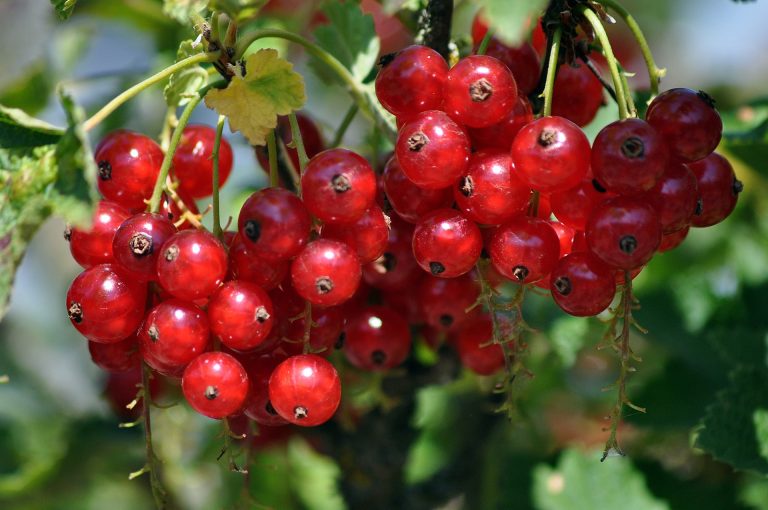Redcurrant: Botanical Insights, Nutritional Benefits, Culinary Uses, and Agricultural Significance
Introduction
Redcurrants (Ribes rubrum) are vibrant berries cherished for their tart flavor, bright red color, and versatility in culinary applications. Belonging to the Ribes genus within the Grossulariaceae family, redcurrants are esteemed for their nutritional richness, health benefits, and agricultural significance. This comprehensive article explores redcurrants from various perspectives, including their botanical characteristics, nutritional composition, culinary uses, global cultivation practices, economic impact, challenges, and future prospects.

Botanical Characteristics and Varieties
Redcurrants are deciduous shrubs native to parts of Europe, with distinctive botanical features that include:
- Shrub Description: Redcurrant shrubs typically grow up to 1-1.5 meters (3-5 feet) tall, featuring lobed, dark green leaves and clusters of small, translucent berries.
- Fruit Characteristics: The berries are round to oval-shaped, approximately 0.5-1 cm in diameter, and have a glossy, translucent skin that ranges from pale pink to deep red when ripe.
- Varieties: Cultivated varieties of redcurrants vary in berry size, flavor intensity, and resistance to diseases. Common cultivars include ‘Red Lake’, ‘Rovada’, and ‘Jonkheer van Tets’, each selected for specific traits such as yield and berry quality.
Nutritional Composition and Health Benefits
Redcurrants are prized for their exceptional nutritional profile, offering a range of vitamins, minerals, antioxidants, and dietary fiber:
- Vitamins: Redcurrants are rich in vitamin C, providing significantly higher levels than many other fruits. Vitamin C boosts immunity, synthesis of collagen, and antioxidant defense.
- Antioxidants: The vibrant red color of redcurrants is due to anthocyanins and other flavonoids, which contribute to their antioxidant properties and potential health benefits.
- Minerals: They contain essential minerals such as potassium, manganese, and copper, important for electrolyte balance, bone health, and enzyme function.
- Dietary Fiber: Redcurrants are a good source of dietary fiber, promoting digestive health, satiety, and blood sugar regulation.

Culinary Uses and Culinary Versatility
Redcurrants are celebrated for their tart flavor and are used in a variety of culinary applications:
- Fresh Consumption: Enjoyed fresh, redcurrants are tart and tangy, often paired with sweeteners in desserts, fruit salads, or savory dishes.
- Preserves and Jams: Redcurrants are commonly used to make jams, jellies, and fruit preserves due to their natural pectin content and vibrant color.
- Beverages: They are used to flavor beverages such as juices, syrups, cocktails, and culinary infusions, adding a refreshing acidity and depth of flavor.
- Baking: Redcurrants are added to baked goods such as cakes, tarts, muffins, and scones, enhancing both flavor and visual appeal with their bright red hue.
Agricultural Significance and Global Cultivation
Redcurrants are cultivated in temperate regions worldwide, primarily for commercial production and home gardening:
- Climate Requirements: They thrive in cool climates with adequate rainfall and well-drained soil, preferring sunny to partially shaded locations.
- Propagation: Redcurrants are propagated via hardwood cuttings or by layering, with new plants typically bearing fruit within 2-3 years of planting.
- Pests and Diseases: Common pests include aphids and caterpillars, while diseases such as powdery mildew and leaf spot can affect plant health and fruit quality.
- Harvesting: Berries are harvested when fully ripe, typically in mid-summer, using gentle hand-picking to ensure careful handling and preservation of fruit quality.
Challenges in Redcurrant Cultivation
Redcurrant cultivation faces several challenges that can impact yield, quality, and sustainability:
- Disease Management: Effective disease control measures are crucial to prevent fungal infections, viral diseases, and pest infestations that can reduce crop productivity.
- Climate Sensitivity: Variability in weather patterns, including late frosts or heatwaves, can affect flowering, fruit set, and overall crop yield in susceptible growing regions.
- Market Demand: Ensuring consistent market demand and pricing stability for fresh and processed redcurrant products in competitive global markets.

Economic and Social Impact
Redcurrant production contributes to local economies, rural communities, and global food supply chains:
- Economic Value: Commercial cultivation supports livelihoods through employment in farming, processing, distribution, and export sectors.
- Value-Added Products: Redcurrants are processed into a range of value-added products, including juices, syrups, sauces, and fruit fillings, expanding market opportunities and consumer appeal.
- Cultural Heritage: In regions such as Northern Europe and North America, redcurrants hold cultural significance, featured in traditional recipes, festivals, and culinary traditions.
Future Prospects and Innovations
Advancements in redcurrant research and cultivation aim to enhance sustainability, productivity, and nutritional quality:
- Breeding Programs: Developing new cultivars with improved disease resistance, yield potential, and flavor profiles tailored to diverse growing conditions.
- Nutritional Research: Investigating the health benefits of redcurrants and their bioactive compounds, including potential applications in functional foods and nutraceuticals.
- Sustainable Practices: Implementing sustainable farming practices, such as integrated pest management, soil conservation, and water-efficient irrigation techniques.
- Global Expansion: Exploring new markets and consumer demographics for redcurrant products, including emerging markets in Asia, South America, and beyond.
Conclusion
In conclusion, redcurrants epitomize the nutritional richness, culinary versatility, and agricultural significance of berry crops. From their botanical origins and nutritional benefits to their global cultivation practices, challenges, and future innovations, redcurrants continue to captivate consumers, researchers, and growers alike. As we navigate towards a future shaped by climate variability and technological advancements, redcurrants remain resilient, adaptive, and indispensable in promoting health, flavor, and sustainability in global food systems.
This article has provided a comprehensive exploration of redcurrants, covering their botanical insights, nutritional benefits, culinary uses, agricultural significance, challenges, and future prospects. Whether enjoyed fresh, processed, or as ingredients in culinary creations, redcurrants exemplify the enduring appeal and nutritional value of nature’s bounty in the realm of fruits and berries.

